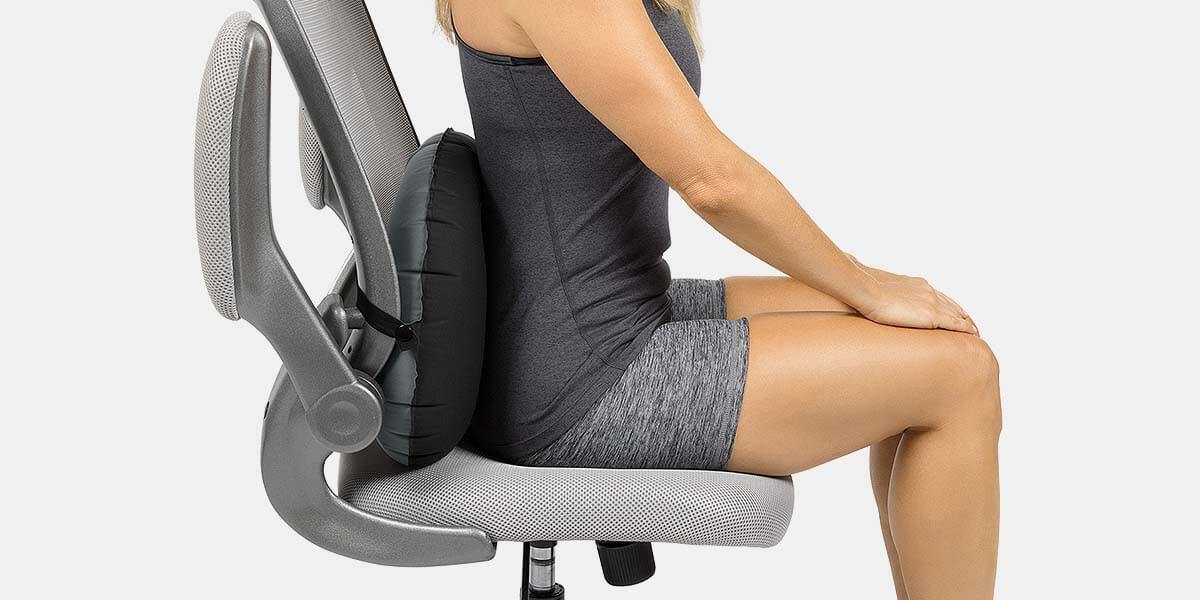In the realm of office ergonomics, the humble desk chair is a silent partner to our professional pursuits. Yet, it’s often an overlooked feature—lumbar support—that holds the secret to eliminating those persistent backaches. As the nature of workspaces continues to evolve, so does our comprehension of what makes an office chair genuinely supportive and conducive to health. Lumbar support emerges as a fundamental aspect, pivotal for maintaining proper posture and spinal integrity.
The Importance of Lumbar Support
Understanding Lumbar Support The lumbar spine, consisting of five vertebrae, boasts a natural inward curve crucial for overall spinal health. Properly adjusted lumbar support in an office chair bolsters this curve, mitigating stress on the lower back. Envision an office worker, hunched over, typing fervently, unaware of the creeping strain on their spine. Without adequate lumbar support, this strain can accumulate, potentially leading to long-term back issues. In our digital age, where sitting dominates our time, lumbar support transcends luxury—it’s an essential safeguard against postural problems and chronic back pain.

The Direct Impact on Comfort and Productivity Beyond posture, lumbar support is a direct influencer of comfort and productivity. Discomfort is a significant distraction, and without proper support, meeting deadlines becomes a secondary concern to the constant call of back pain.
Recognizing the Need for Adjustment
Signs Your Lumbar Support Needs Attention
- Pronounced Lower Back Pain: Persistent lower back ache is a clear sign that your lumbar support requires fine-tuning.
- Frequent Seating Adjustments: Constantly shifting in your seat or experiencing numbness indicates inadequate support.
- Forward Leaning: If you’re leaning forward or slouching, your lumbar support may be misaligned.
- Misaligned Shoulders: Shoulders not aligned over hips suggest a need for lumbar adjustment.
- Chronic Back Issues: Neglecting these signs can lead to severe conditions like chronic lumbar pain or disc herniation.
Optimizing Lumbar Support
Steps to Position Your Lumbar Support
- Find Your Lumbar Sweet Spot: Sit at the edge of your chair and rock your pelvis to locate the natural curve of your spine.
- Adjust Height and Depth: Align the lumbar support with your lumbar sweet spot, ensuring it supports without pushing you forward.
- Test and Retest: Allow a couple of days for testing and make adjustments as needed.
- Unique Posture Needs: For specific back issues or postures, consider an adjustable lumbar cushion for tailored support.
The Role of Chair Adjustments
Seat Depth and Height in Lumbar Support
- Why Seat Depth Matters: It determines the interaction between your hips, thighs, and lower back with the chair.
- Adjusting Seat Height: The height affects the angle of your thighs, which should ideally form a 90-degree angle with your knees.
- Interplay Between Adjustments: Altering seat depth or height may necessitate adjustments to the other to maintain ergonomic harmony.
Materials and Types of Lumbar Supports
Built-in vs. Add-on Lumbar Supports
- Built-in supports are integrated into the chair design, while add-ons offer customization.
Different Materials
- Foam: Molds to your back, providing consistent support.
- Mesh: Breathable and firm, suitable for warmer climates or those prone to sweating.
Choosing the Right Type
- Select based on individual needs like pain relief, breathability, or adjustability. Comfort is the ultimate indicator of the right choice.
Enhancing Lumbar Comfort Beyond the Chair
Exercises and Stretches
- Incorporate movements like “cat-cow” or pelvic tilts to maintain spinal flexibility.
Changing Sitting Positions
- Shift positions every 30 minutes to redistribute pressure and prevent discomfort.
Considerations for a New Office Chair
When in the market for a new chair, prioritize options with adjustable lumbar support to ensure long-term comfort and proper posture.
Common Mistakes to Avoid
- Overcompensating: Excessive support can be as harmful as too little.
- Isolated Lumbar Support: It should be part of an overall ergonomic setup.
- Ignoring Regular Readjustment: Adapt your lumbar support as your body and needs change over time.
Conclusion
The lumbar region is central to your body’s functionality, and neglecting its health can lead to discomfort and long-term health issues. At Unionchair.com, we recognize the critical role spinal health plays in daily life. It’s time to offer your back the support it deserves, ensuring a pain-free and productive workday.
